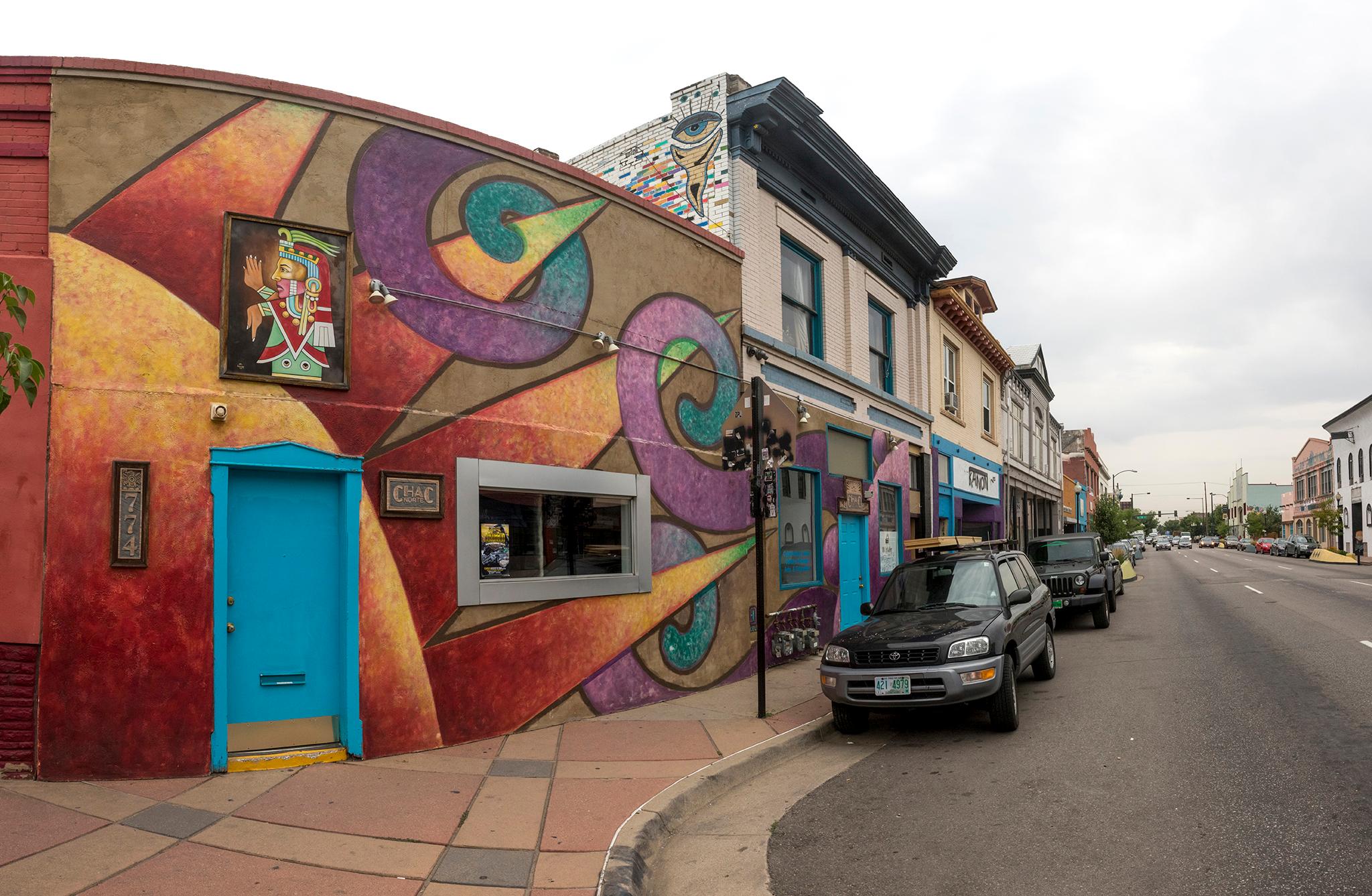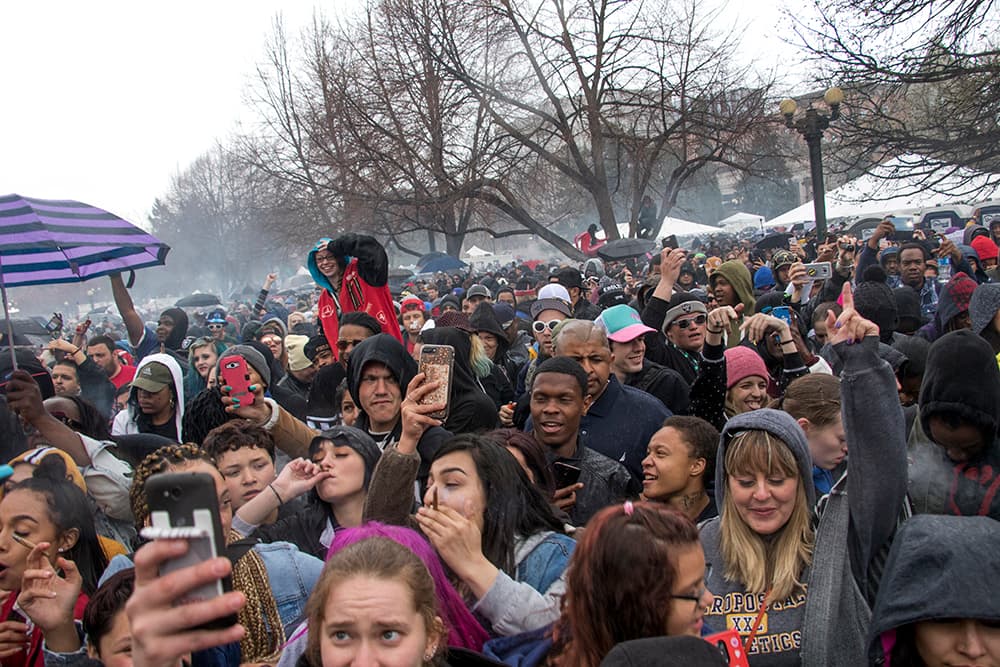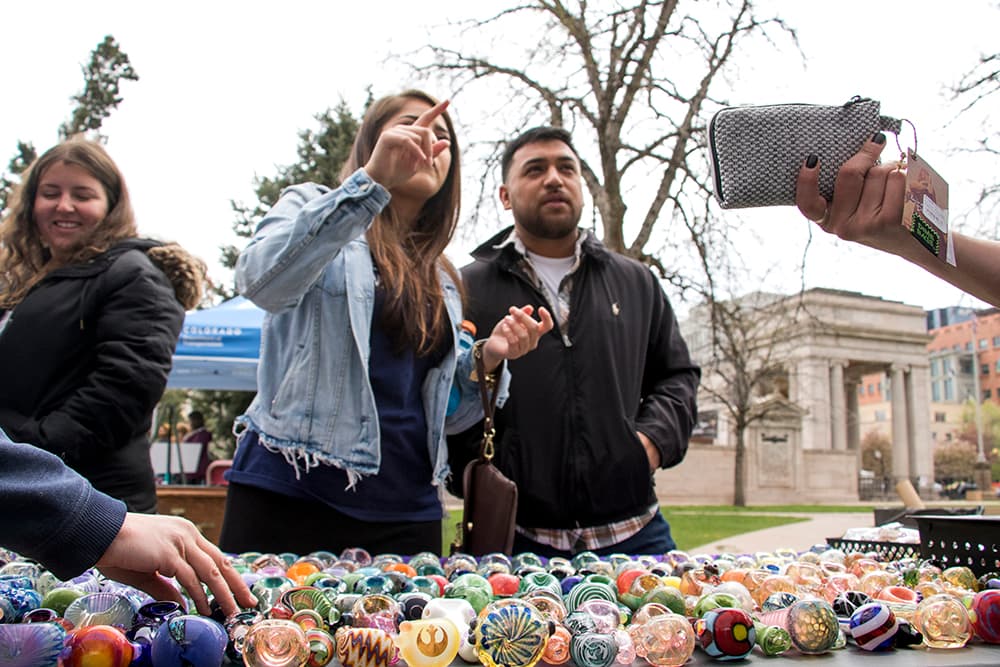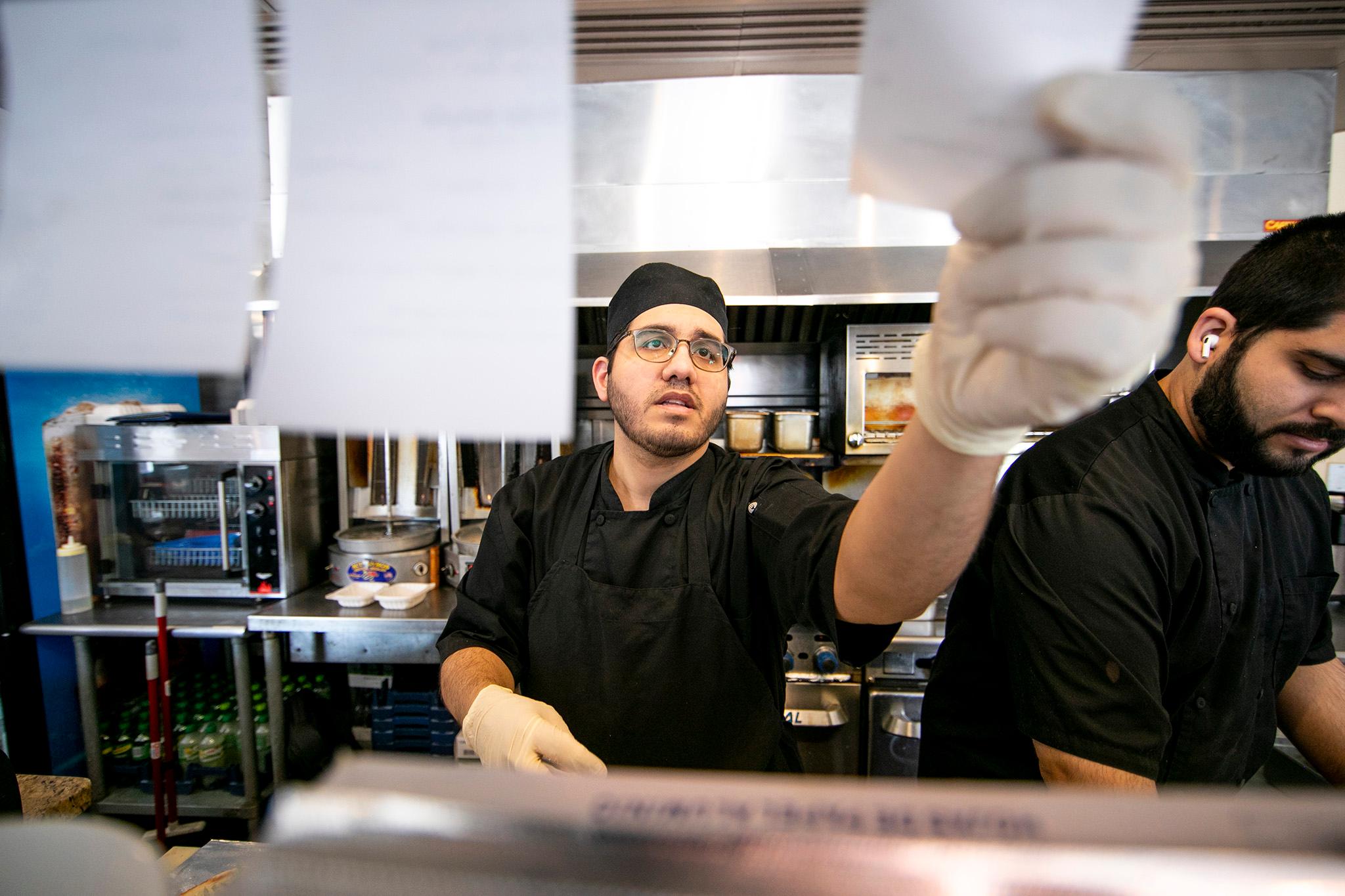The Denver cultural force that is the Chicano Humanities and Arts Council will no longer be based in the city.
On Wednesday, the nonprofit -- which has served as a hub for many renowned artists since 1978 -- inked a lease with Lakewood's 40 West Arts District. In April, CHAC will be moving into 1560 Teller St., taking over the 40 West Gallery, which will be relocated to a massive new building owned by 40 West.
CHAC was one of many galleries that helped make Santa Fe Drive so trendy. Over the years, many longstanding neighbors and businesses in the traditionally Chicano community have been priced out and moved away.
The nonprofit's move is a loss for the Art District on Santa Fe, where CHAC resided in its longtime home at 772 and 774 Santa Fe Dr. until 2018 and in its most recent location at 222 Santa Fe Dr. The nonprofit had the option to buy the first building for $500,000 but couldn't pull together the financing. By the time they revisited the idea, the price had shot up to $1.5 million, and the organization was forced to move, said board chair Renne Fajardo.
At CHAC's most recent location, the nonprofit paid a hefty $4,000 a month on a part of Santa Fe Drive removed from the main art district and the bustle of First Fridays. There was no parking, no foot traffic, and twice the rent the gallery had paid before. Making fewer sales and feeling disconnected from the district, CHAC was in a precarious financial position.
During the pandemic, the organization nearly folded, said executive director Brenda Gurule, a former volunteer who took the helm at CHAC after longtime head Lucille Rivera retired. Nearly everybody on the board of directors quit, burned out.
After leaving its 222 Santa Fe Drive spot, the group looked at nearby locations, but all were dilapidated and overpriced. It eventually gave up hope of staying near the art district. Denver itself proved too expensive.
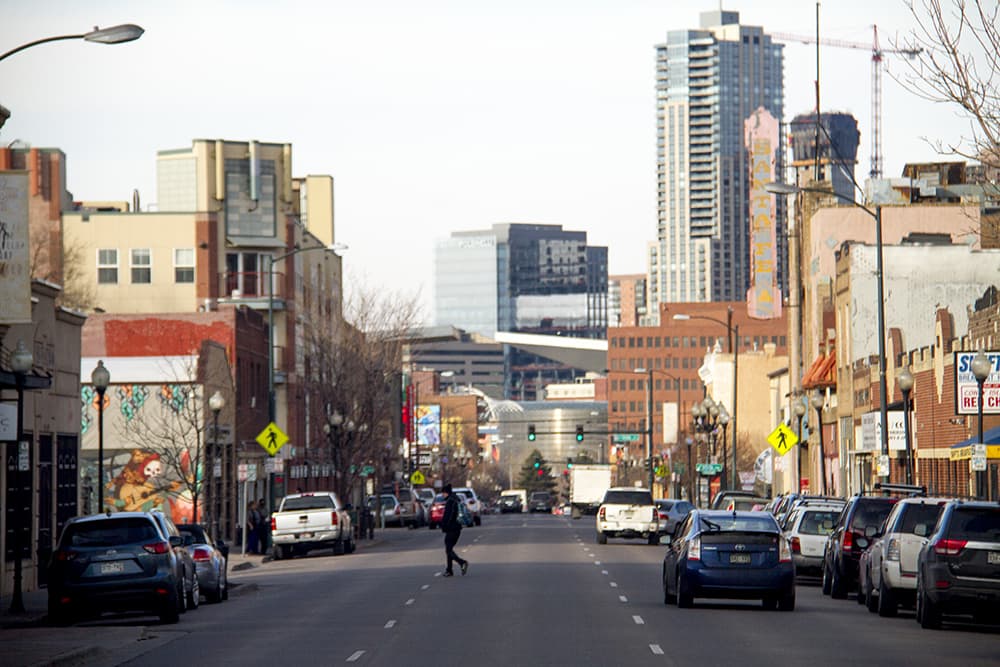
"We got gentrified," said painter and CHAC Education Director Arlette Lucero, who has been with the group since its earliest days. "We got priced out."
The group shut its brick-and-mortar gallery. Instead, it offered online classes and shows at galleries in suburbs like Lafayette, Thornton and Lakewood, where audiences were enthusiastic about the seasoned artists' work.
With permission from the former board, Gurule recruited a new crew of board members -- nearly all women -- and began to drum up interest from younger generations of Chicano artists. One of those was the late Alicia Cardenas, owner of the body art shop Sol Tribe and a rising muralist.
Cardenas was on a mission to help use CHAC to bridge a generational gap. She wanted to connect elder Chicano artists, many of whom were making their mark in the 1970s and '80s, and artists in their 40s and younger who weren't yet steeped in the city's rich Chicano muralist tradition.
"She wanted to bring in her group of artist friends," Lucero said. "And in doing so, you know, kind of put a shot in the arm. And she did. She brought in some really great younger artists who are now part of CHAC."
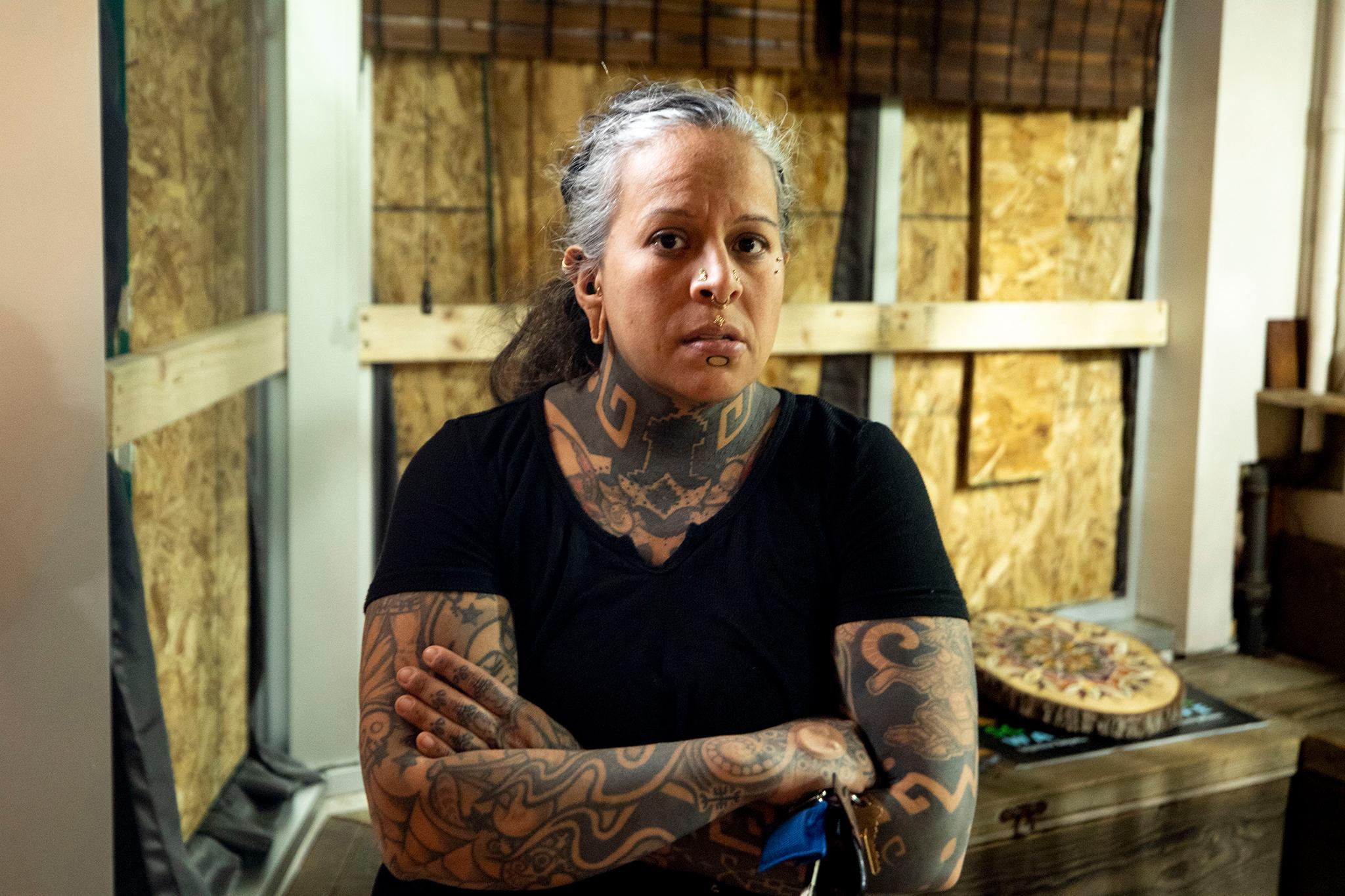
New leadership and artists helped CHAC rise from near death and become a vibrant Denver arts organization again -- even if much of the programming was happening elsewhere.
In 2021, CHAC faced huge loss. In July, artist Bob Luna died. Metarealist painter and Arlette's husband Stevon Lucero passed away in November, and then, at the end of December, Cardenas was one of the people killed by a mass shooter.
Amid the loss, CHAC continued to flourish while memorializing those who died at current and upcoming shows around the metro area.
Losing CHAC, which has been a home for artists including Emanuel Martinez, Jerry Jaramillo, Tony Garcia and many others, is an undeniable blow to Denver and another coup for Lakewood, which is saving Denver's gallery scene one re-homed gallery at a time.
Snagging CHAC is the latest win for 40 West, which has spent the past few years adopting galleries and art groups priced out of Denver that would otherwise close. Without this decade-old Lakewood art district, many of Denver's historic galleries -- like Pirate: Contemporary Art, Edge Gallery and Next -- would have disappeared.
40 West executive director Liz Black is thrilled to welcome CHAC into her rising arts district. Though many galleries have relocated to Lakewood, she's cautious to note that nobody's trying to poach Denver galleries from other arts districts. They just keep coming, priced out of Denver and looking for a home.
"We love our Denver arts districts," Black said. "And we're really proud of the relationship and partnership that we have with so many of them. And having said that, 40 West Arts has seen exponential growth over its decade in existence, from really just a vision for an arts district along Lakewood's West Colfax Corridor to what we're seeing today, a decade later, which is that we have a number of creative businesses that have either opened or relocated here to be proximal to 40 West Arts and the movement that's taking place along Lakewood's West Colfax corridor and throughout the West metro area in general."
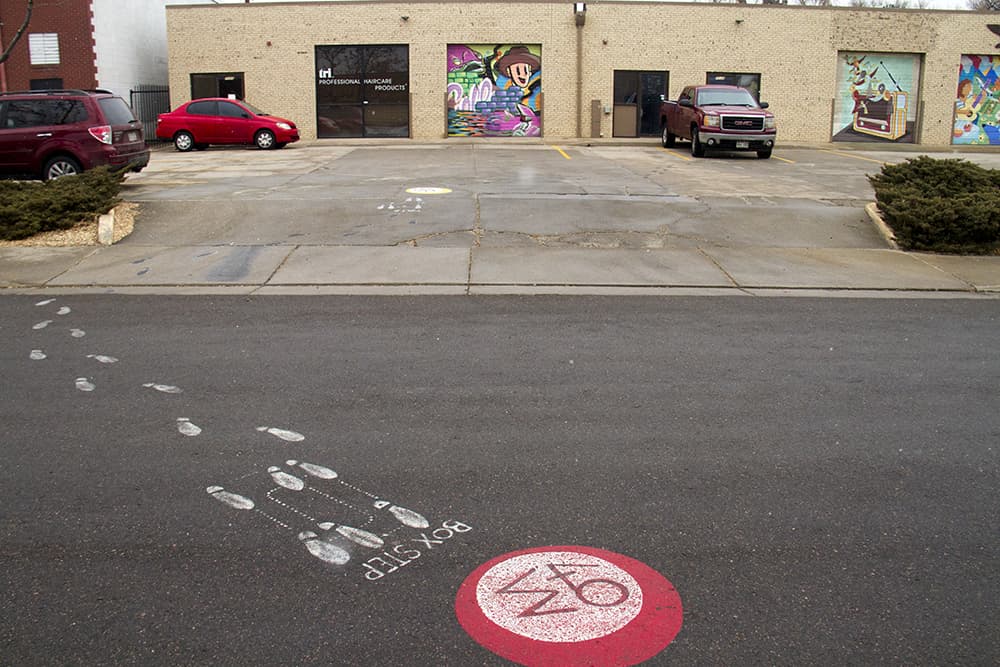
For 40 West, which is located in 48% Latino community, the need to cultivate more galleries and cultural programming from that community was obvious to leadership, Black said.
"We realized that we as an arts district needed to do more to cultivate our Latinx community," she explained. "The only real authentic way to do that is to turn over the engagement of that community to folks that are from that community."
Recently, the group has taken in an Aztec dance troupe and one of Denver's oldest Latino dance nonprofits, Fiesta Colorado. The district also worked on Dia de los Muertos and other programming with CHAC, and it soon became clear that the two organizations were a good fit.
"CHAC realized that we could be a really powerful partner for them in the reopening of their gallery, and we already knew that they would be a really powerful and important partner for us," Black said.
CHAC leadership is thrilled to have a new, permanent home and be relocated in an arts district that cares about its success, in a city that is a little more affordable.
"What we were being offered in Lakewood is a killer deal," Fajardo said. "$2,000 a month. A whole arts district. Parking. They're giving us our April rent free. And they're subsidizing us to get us over there."
The organization plans to set up shop in the spring and launch its first show on June 4, Generations: An Intergenerational Art Show in Honor of Alicia Cardenas.
Looking back at a devastating couple of years, Lucero is happy about where CHAC has arrived and how it will continue to create space for artists into the future.
"CHAC almost perished," Lucero said. "But it didn't, because a group of us got together, and we put it in a whole new direction. And since it's run by mostly women, and we're, as women, we're pretty go-getters, so we made it happen. And we're very, very excited about what's coming next and what's going to be happening.

